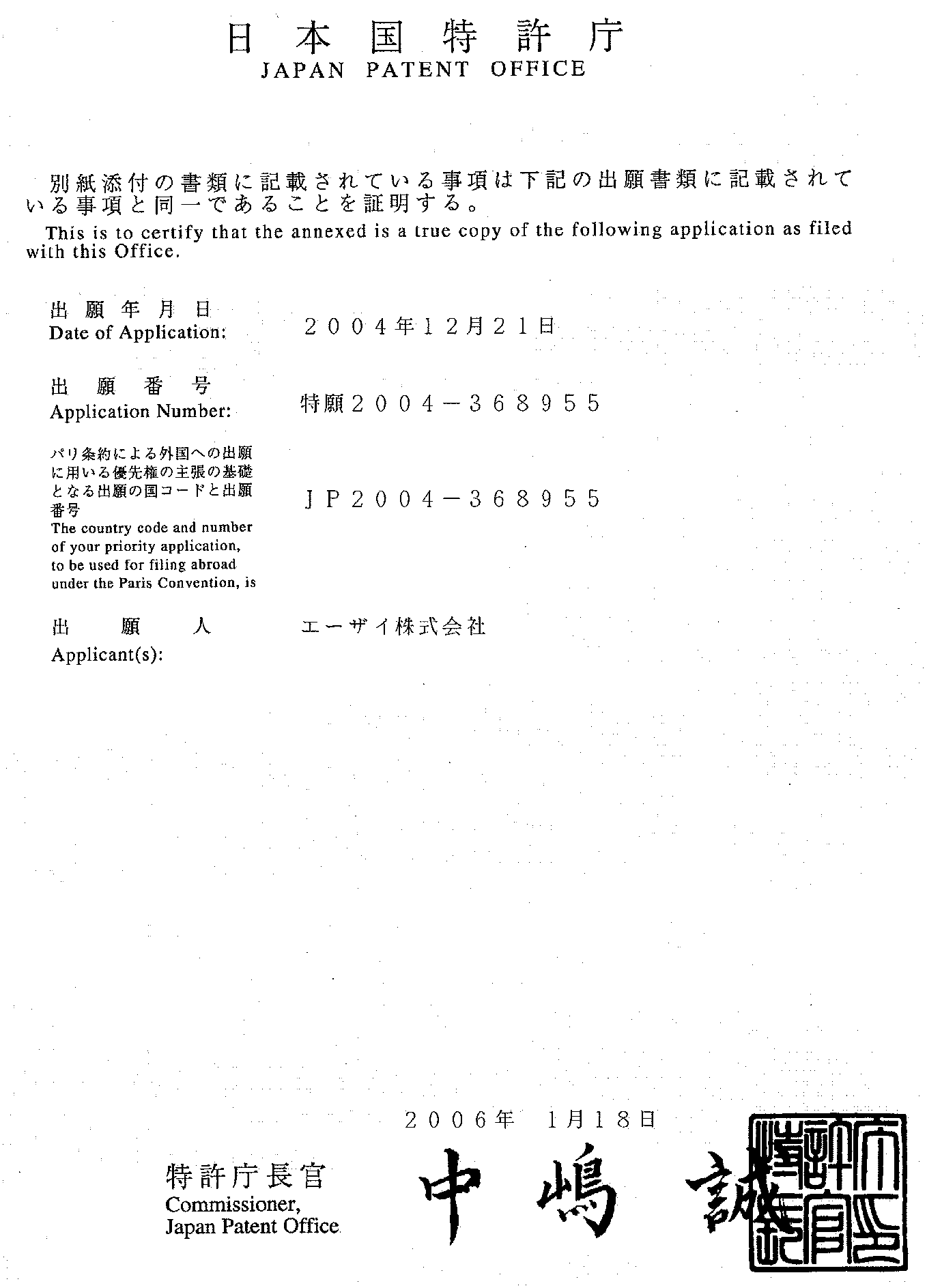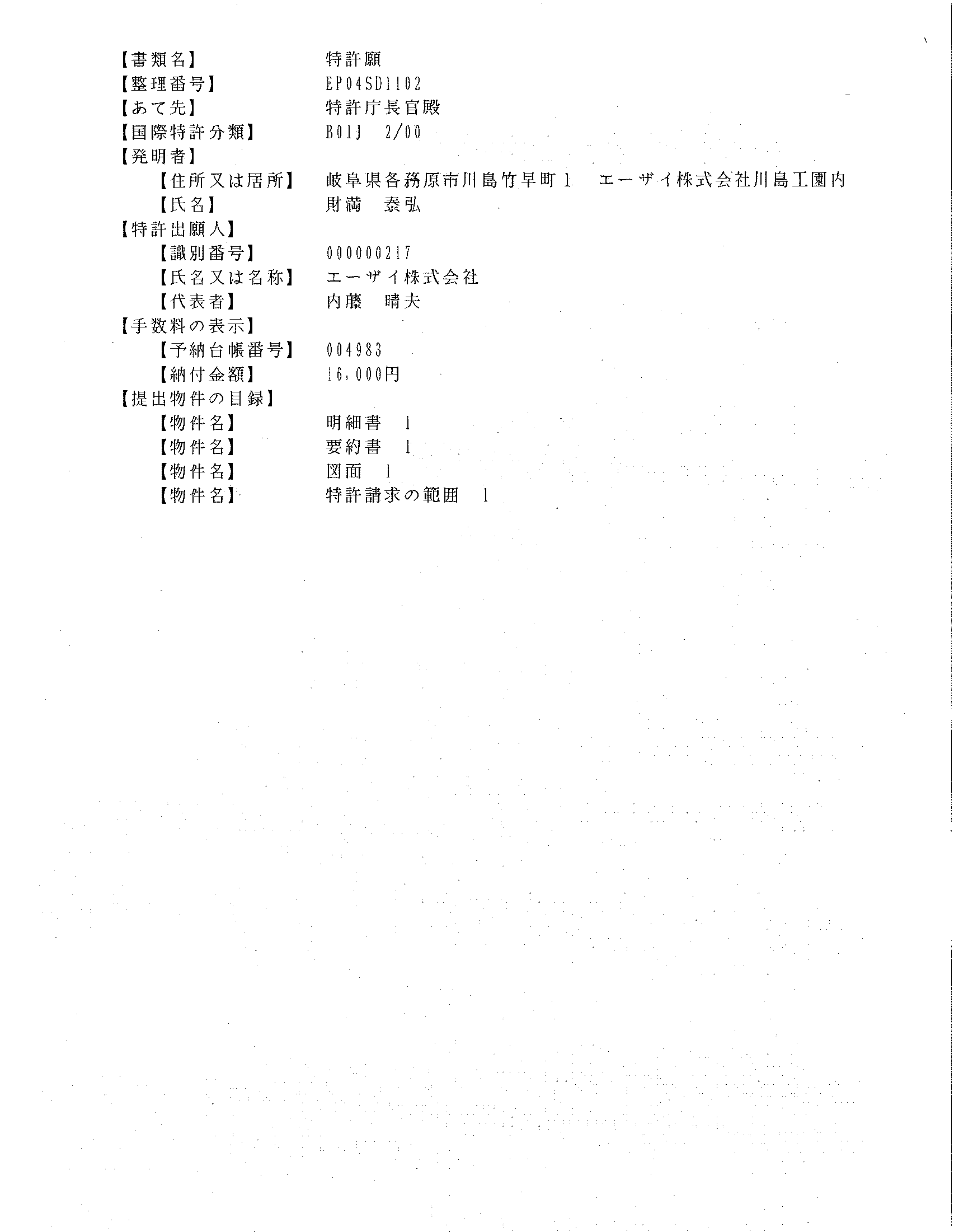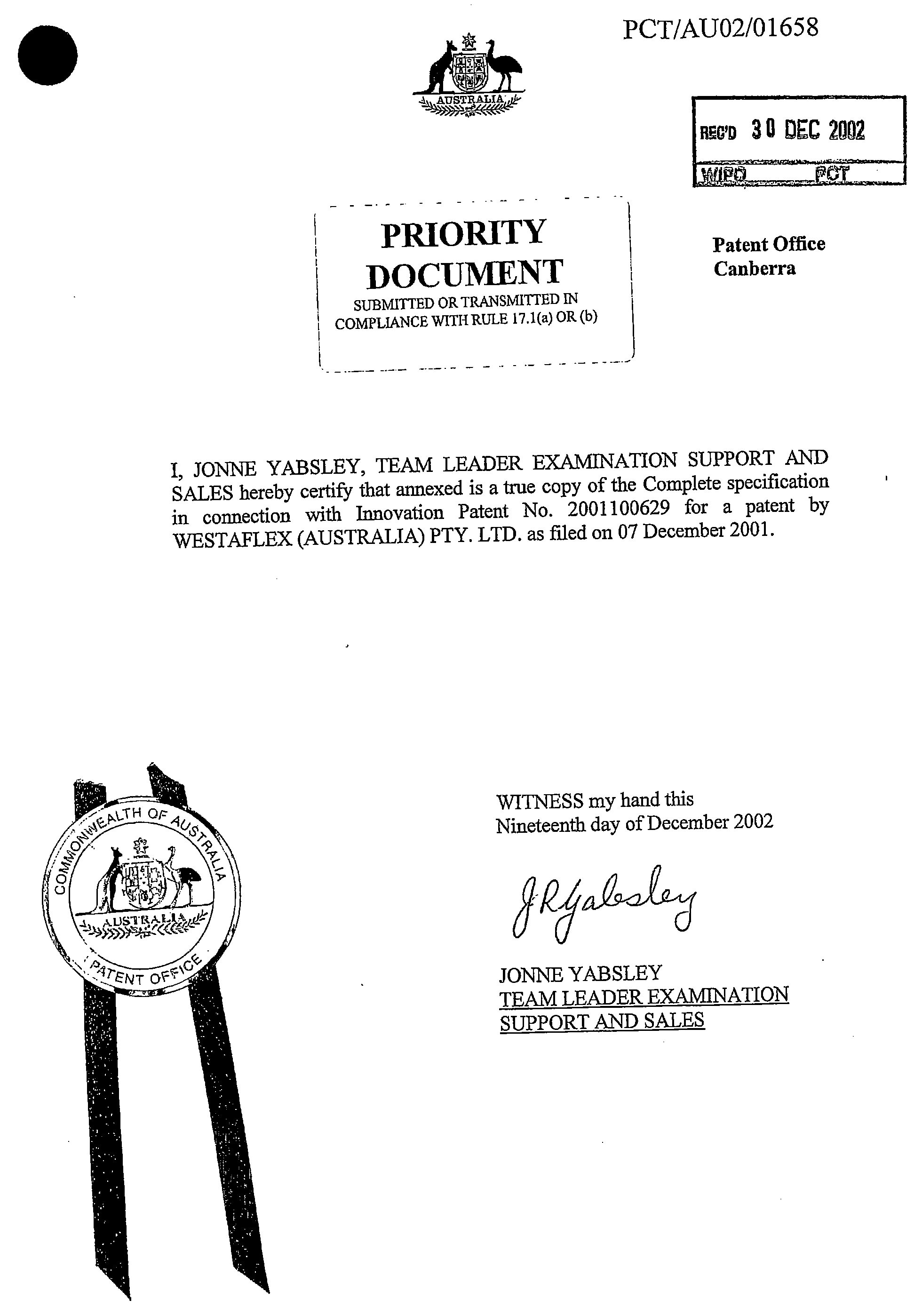Notice regarding Section 508 of the Workforce Investment Act of 1998. Section 508 of the Workforce Investment Act of 1998 requires all United States Federal Agencies with websites to make them accessible to individuals with disabilities. At this time, the MPEP files below do not meet all standards for web accessibility. Until changes can be made to make them fully accessible to individuals with disabilities, the USPTO is providing access assistance via telephone. MPEP Interim Accessibility Contact: 571-272-8813.
1893.03(c) The Priority Date, Priority Claim, and Priority Papers for a U.S. National Stage Application [R-6] - 1800 Patent Cooperation Treaty
1893.03(c) The Priority Date, Priority Claim, and Priority Papers for a U.S. National Stage Application [R-6]
A U.S. national stage application may be entitled to: (A) a right of priority under 35 U.S.C. 119(a) and 365(b) based on a prior foreign application or international application designating at least one country other than the United States; and (B) the benefit of an earlier filed U.S. national application or international application designating the United States pursuant to 35 U.S.C. 119(e) or 35 U.S.C. 120 and 365(c).
I. RIGHT OF PRIORITY UNDER 35 U.S.C. 119(a) and 365(b)
Pursuant to 35 U.S.C. 365(b) a U.S. national stage application shall be entitled to a right of priority based on a prior foreign application or international application designating at least one country other than the United States in accordance with the conditions and requirements of 35 U.S.C. 119(a) and the treaty and the PCT regulations. See in particular PCT Article 8 and PCT Rules 4.10 and 26bis. To obtain priority in the U.S. national stage application to such applications, the priority must have been timely claimed in the international stage of the international application. See 37 CFR 1.55(a)(1)(ii). If priority was properly claimed in the international stage of the international application, the claim for priority is acknowledged >(subject to the paragraph below)< and the national stage application file is checked to see if the file contains a copy of the certified copy of the priority document submitted to the International Bureau.
>International applications filed on or after April 1, 2007 are subject to amended PCT Rules permitting restoration of a right of priority. See MPEP § 1828.01. Consequently, international applications filed on or after April 1, 2007 may claim priority to a foreign application filed more than 12 months before the filing date of the international application. While such priority claims are permitted in the international stage, the right of priority will not be effective in the U.S. national stage, as 35 U.S.C. 119(a) does not permit a priority period that exceeds 12 months.<
If the priority claim in the national stage application is to an application, the priority of which was not claimed in the international stage of the international application, the claim for priority must be denied for failing to meet the requirements of the Patent Cooperation Treaty, specifically PCT Rule 4.10.
For a comparison with 35 U.S.C. 119(a)-(d) priority claims in a national application filed under 35 U.S.C. 111(a), see MPEP § 1895.01.
II. THE CERTIFIED COPY
The requirement in PCT Rule 17 for a certified copy of the foreign priority application is normally fulfilled by applicant providing a certified copy to the receiving Office or to the International Bureau or by applicant requesting the receiving Office to prepare and transmit the priority document to the International Bureau if the receiving Office issued the priority document. Pursuant to PCT Rule 17.1(a)-(b), applicant must submit the certified copy, or request the receiving Office to prepare and transmit the certified copy, within 16 months from the priority date. Where applicant has complied with PCT Rule 17, the International Bureau will **>forward a copy of the certified priority document to each Designated Office that has requested such document with an indication that the priority document was submitted in compliance with the rule and the date the document was received by the International Bureau. This indication may be in the form of either a cover sheet attached to the copy of the priority document or a WIPO stamp on the face of the certified copy.< The U.S. Patent and Trademark Office, as a Designated Office, will normally request the International Bureau to furnish the copy of the certified priority document upon receipt of applicant's submission under 35 U.S.C. 371 to enter the U.S. national phase. The copy from the International Bureau is placed in the U.S. national stage file. The copy of the **>priority document received from the International Bureau with either of the indications above< is acceptable to establish that applicant has filed a certified copy of the priority document. The examiner should acknowledge in the next Office action that the copy of the certified copy of the foreign priority document has been received in the national stage application from the International Bureau.
**>On the following pages, note the examples of acceptable indications in the form of:
(A) a cover sheet indicating receipt by the International Bureau on 02 February 2006 and compliance with PCT Rule 17 in the "Remark" section; and
(B) <the stamp (box) in the upper right hand section indicating receipt by the International Bureau (WIPO) on 30 December 2002 and the stamped indication "PRIORITY DOCUMENT SUBMITTED OR TRANSMITTED IN COMPLIANCE WITH RULE 17.1(a) OR (b)."
>



If the International Bureau is unable to forward a copy of the certified priority document to the U.S. Patent and Trademark Office because applicant failed to comply with PCT Rule 17(a)-(b), then applicant will have to provide a certified copy of the priority document >(or have the priority document furnished in accordance with 37 CFR 1.55(d))< during the national stage to fulfill the requirement of 37 CFR 1.55(a)(2).
III. BENEFIT CLAIM UNDER 35 U.S.C. 119(e), OR 120 AND 365(c)
A national stage application may include a benefit claim under 35 U.S.C. 119(e), or 120 and 365(c) to a prior U.S. national application or under 35 U.S.C. 120 and 365(c) to a prior international application designating the U.S. The conditions for according benefit under 35 U.S.C. 120 are as described in MPEP § 201.07, § 201.08, and § 201.11 and are similar regardless of whether the U.S. national application is a national stage application submitted under 35 U.S.C. 371 or a national application filed under 35 U.S.C. 111(a).
The conditions for according benefit under 35 U.S.C. 119(e) are also similar for national stage applications and applications filed under 35 U.S.C. 111(a), and the conditions are described in MPEP § 201.11.
In order for a national stage application (of international application "X") to obtain benefit under 35 U.S.C. 119(e) of a prior U.S. provisional application, the national stage application must comply with the requirements set forth in 37 CFR 1.78(a)(4) through 37 CFR 1.78(a)(6). Public Law 106-113 amended 35 U.S.C. 119(e) to eliminate the copendency requirement for a nonprovisional application claiming benefit of a provisional application. 35 U.S.C. 119(e)(2) as amended became effective on November 29, 1999 and applies to provisional applications filed on or after June 8, 1995. 37 CFR 1.78(a)(4) requires that the prior provisional application must be entitled to a filing date as set forth in 37 CFR 1.53(c), and the basic filing fee set forth in 37 CFR 1.16(d) must be paid on the provisional application within the time period set forth in 37 CFR 1.53(g). Additionally, the provisional application must name as an inventor at least one inventor named in the later filed international application "X" and disclose the named inventor's invention claimed in at least one claim of the national stage application in the manner provided by the first paragraph of 35 U.S.C. 112. The national stage application must contain a reference to the provisional application (either in an application data sheet (37 CFR 1.76) or in the first sentence(s) of the specification), identifying it as a provisional application, and including the provisional application number (series code and serial number). The required reference to the earlier provisional application must be submitted within the time period provided by 37 CFR 1.78(a)(5)(ii). This time period is not extendable. However, if the entire delay, between the date the claim was due under 37 CFR 1.78(a)(5)(ii) and the date the claim was filed, was unintentional, a petition under 37 CFR 1.78(a)(6) may be filed to accept the delayed claim. If the provisional application was filed in a language other than English, an English-language translation of the non-English language provisional application and a statement that the translation is accurate will be required. See MPEP § 201.11, subsection VI. If the translation and statement that the translation is accurate were not filed in the provisional application or in the later-filed national stage application before November 25, 2005, applicant will be notified and given a period of time within which to file an English-language translation and a statement that the translation is accurate in the provisional application, and a reply in the national stage application that the translation and statement were filed in the provisional application. Failure to timely reply to such a notice will result in abandonment of the national stage application. See 37 CFR 1.78(a)(5)(iv).
In order for a national stage application (of international application "X") to obtain benefit under 35 U.S.C. 120 and 365(c) of a prior filed copending nonprovisional application or prior filed copending international application designating the United States of America, the national stage application must comply with the requirements set forth in 37 CFR 1.78(a)(1) through 37 CFR 1.78(a)(3). The prior nonprovisional application or international application must name as an inventor at least one inventor named in the later filed international application "X" and disclose the named inventor's invention claimed in at least one claim of the national stage application in the manner provided by the first paragraph of 35 U.S.C. 112. The national stage application must contain a reference to the prior nonprovisional or international application (either in an application data sheet (37 CFR 1.76) or in the first sentence(s) of the specification), identifying it by application number (series code and serial number) or international application number and international filing date and indicating the relationship of the applications. The required reference to the earlier filed application must be submitted within the later of four months from the date on which the national stage commenced under 35 U.S.C. 371(b) or (f) or sixteen months from the filing date of the prior-filed application. This time period is not extendable and failure to timely submit the required reference to the earlier application will be considered a waiver of any benefit under 35 U.S.C. 120, 121, or 365(c) to such prior-filed application. See 37 CFR 1.78(a)(2)(ii). However, if the entire delay, between the date the claim was due under 37 CFR 1.78(a)(2)(ii) and the date the claim was filed, was unintentional, a petition under 37 CFR 1.78(a)(3) may be filed to accept the delayed claim.
A prior filed nonprovisional application is copending with the national stage application if the prior U.S. national application was pending on the international filing date of the national stage application.
A *>prior-filed< international application designating the United States of America is copending with the national stage application if the prior international application was not abandoned or withdrawn >, either generally or as to the United States,< on the international filing date of **>the national stage application.<
Note: a national stage application submitted under 35 U.S.C. 371 may not claim benefit of the filing date of the international application of which it is the national stage since its filing date is the **>international filing date of the< international application. See also MPEP § 1893.03(b). Stated differently, since the international application is not an earlier application (it has the same filing date as the national stage), a benefit claim under 35 U.S.C. 120 in the national stage to the international application is inappropriate and may result in the submission being treated as an application filed under 35 U.S.C. 111(a). See MPEP § 1893.03(a). Accordingly, it is not necessary for the applicant to amend the first sentence(s) of the specification to reference the international application number that was used to identify the application during international processing of the application by the international authorities prior to commencement of the national stage.
For a comparison with 35 U.S.C. 120 benefit claims in a national application filed under 35 U.S.C. 111(a), see MPEP § 1895.